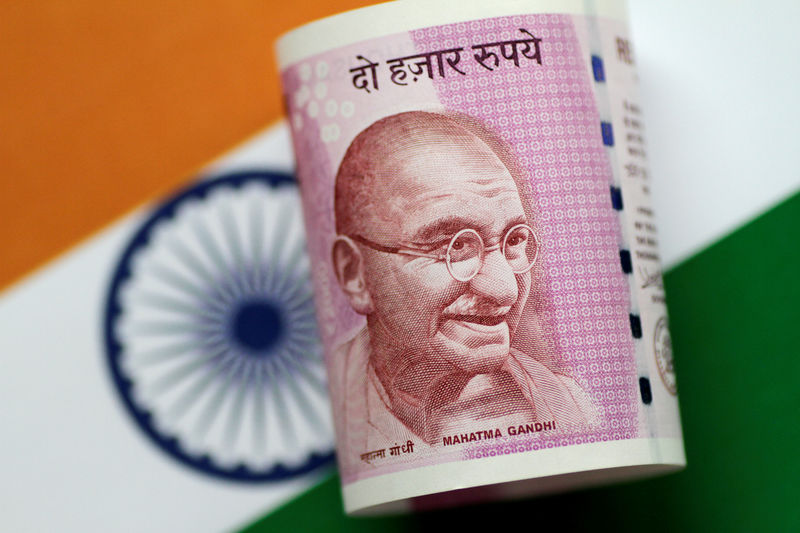(Bloomberg) -- There are very few positives for India’s rupee at the moment, the plunge in crude oil prices is a major one.
Cheaper oil could translate into $40 billion of savings for India, balancing the nation’s current account, according to Bank of America (NYSE:BAC). The last time the nation posted a current-account surplus was in 2004.
As crude prices tanked, it brought relief for the world’s third-largest oil consumer. The rupee rebounded about 2% from a record low touched last month, with a Bloomberg survey of analysts forecasting that it could rise another 1% by year-end to reach 74.74.
“With so many negatives around, the rupee’s trajectory could have been much, much worse had it not been for the big slump in oil prices,” said Dushyant Padmanabhan, strategist at Nomura Holdings (NYSE:NMR) Inc. in Singapore. It’s unlikely to be a straight path for the rupee, he said.
Bank of America’s forecasts for the current fiscal year are based on oil prices at $35.5 per barrel and about $44 billion of net imports, which is about half of the previous fiscal year. Standard Chartered (OTC:SCBFF) Plc sees savings of $50 billion, assuming oil prices at $33 a barrel.
Right now, that may be optimistic with the economy in the grip of a virus-induced slowdown.
The case for the rupee will rest on how quickly India recovers, with demand for fuel plummeting amid the nationwide lockdown and the oil price collapse resulting in tax revenue loss of as much as 400 billion rupees ($5.3 billion), according Care Ratings Ltd.
The government will report key data including industrial production this week, all of which will probably show a collapse in activities.
The data will sharpen the focus on another deficit figure -- the burgeoning fiscal gap as Prime Minister Narendra Modi spends to cushion the economic fallout. Citigroup Inc (NYSE:C). estimates the nation’s budget deficit to widen to 8% of GDP this year, compared with a budgeted 3.5%.
“The key factor driving the rupee going forward will be the government’s fiscal stance,” Goldman analysts led by Danny Suwanapruti, wrote in a note. Any “aggressive fiscal easing could also affect ratings, increase borrowing costs, lead to greater capital outflows, and be associated with a weaker INR.”
Below are the key Asian economic data and events due this week:
- Monday, May 11: New Zealand business confidence, Indonesia balance of payments
- Tuesday, May 12: China CPI, India CPI and industrial production, Japan reserves assets, Australia business confidence, Japan leading business cycle index,
- Wednesday, May 13: New Zealand rate decision, Malaysia GDP and balance of payment, Japan balance of payment, bankruptcies and trade data, Australia consumer confidence and South Korea unemployment
- Thursday, May 14: Japan foreign stocks and bond purchases, Australia unemployment and consumer inflation expectations, India wholesale prices
- Friday, May 15: China industrial production and retail sales, Japan producer prices, trade data in India, Indonesia, South Korea import and export price indexes, Thailand reserves
- May 11 week: South Korea household lending
©2020 Bloomberg L.P.
